Making the Mix Room: Chuck Zwicky’s Zmix — Chelsea, New York City
Just over Chelsea way in Manhattan, is a man who takes mixing very, very seriously.
The discography of Chuck Zwicky is deep and diverse, stacked with hitmakers that include The Rembrandts, Reggie Watts, Soul Asylum, Prince and Information Society, along with plenty of new blood. Visit his sun-soaked mixing HQ, and you’ll see he takes his own unique approach to mixing, evident from the gear he selects and the plugins he personally designs.
The results he achieves speak for themselves (and you’ll find plenty of examples below), but its the way this mixmaster goes about his craft that increases the inspiration. Equal parts audio artist and scientist, Zwicky is more than happy to tune you into his techniques.
Mixer Name: Chuck Zwicky
Website:http://www.zmix.net
Location Chelsea, located on a small island off the coast of the United States called Manhattan, New York, NY, USA, Earth.
Mix Philosophy: My approach to mixing is that I try to bring out what the song is thinking, if you will, to find the essence of what it is, and what it’s trying to communicate.
The first time I push up the faders I imagine what this song is going to feel like once it’s mixed. My job as a mixer is to translate that feeling into workable sounds and define the relationships between those sounds – creating the context in which each element has a purpose – and to use these individual elements to create a living, breathing entity and introduce it to the listener.
I’ve learned some valuable lessons about mixing in my career, two of which can be summed up as: “Apathy is Contagious” and “The Buck Stops Here”.
Here’s how I got there: Years ago I had stopped by a producer’s studio as he was cutting a record with a “big name” engineer, but they happened to be out to lunch. The assistant was there and I asked him how the engineer liked the room. He told me: “The first thing he said when he walked in was – ‘you can’t cut drums in here.’”
We were both a bit mystified as we particularly liked that room for drums..! Several months later I was hired to mix that record, and had long since forgotten about that conversation. I pushed up the faders and my first thought was, “I can’t mix this, these drum sounds are terrible”. Suddenly I remembered what the “big name” engineer had said… and that’s the moment I realized that apathy is contagious, and that the buck stops here.
Sometimes even today I’ll get a song to mix and think “Wow those sounds are terrible”, or “those performances are really lacking”. Who knows why, maybe there were unseen obstacles, maybe someone just didn’t care anymore. If I sense that this is affecting my attitude, I immediately remember that “apathy is contagious”, and “the buck stops here”.
In other words, no matter what I’ve been handed, if I don’t make this song the most fun/compelling/lovable/kick-ass/cool thing, the end listener certainly won’t. This realization then brings me full circle to the process I mentioned earlier about finding the intent of the song and the performances and providing them the context in which they all shine.
Clients/Credits: Prince, Soul Asylum, Reggie Watts, Information Society, Delirious?, Julianne Moore/The Kills, The Jonas Brothers, Rick Moranis, The Drowning Pool, Boots Riley.
One of the more unusual projects I am currently mixing is a set of long form pieces by Jon Gibson, who is a founding member of the Philip Glass Ensemble, and has performed in: the premier of “In C” by Terry Riley; “Drumming” by Steve Reich; as well as Reich’s 1967 composition “Reed Phase”, written especially for him.
He uncovered some multitracks of four pieces he recorded in 1980 and 1981 and I am honored to be mixing them now. These tapes are like a time-capsule of the late 1970s New York Minimalist movement: Dense, claustrophobic, and yet so open. Sculptural in composition and texture, they reveal an entirely different way of seeing music, and are possibly more effective today in their stark contrast than they would have been had they been released 34 years ago.
Key Personnel : Kate-O the studio cat, who often assists in gear mods…
Mix Room Hunters: When I came to New York in 2001 the music business was really changing. Labels were extending their payment schedules, some as long as 180 days, and budgets were shrinking. I knew that if I was going to survive these changes I was going to need to have a setup of my own. I lucked into a beautiful room, prewar with 18” thick plaster and lath walls, an incredibly symmetrical layout and nearly acoustically perfect dimensions. I had already amassed a very large collection of outboard gear, more than a lot of studios where I’d mixed. It was time to set up and get to work.
Sound/Design: The most important piece of gear in a mix room is the room itself. My design goal is to make the room as neutral as possible acoustically, as flexible as possible in terms of gear, and maintain a comfortable, inviting and interesting vibe. This is a place where I curate an artist’s dreams.
My setup is a hybrid incorporating lots of analog gear as channel and bus inserts in the DAW. The converters I use do not impart a sound of their own, so the sonic signature of each piece of outboard gear is perfectly preserved. I’ve run several experiments on my system to test the signal degradation after 60 generations round trip through my converters and it’s quite impressive how good it still sounds after all those conversions. These results are available on my website.
Choice Pieces: It’s hard to single anything out, they’re all pieces of a very beautiful puzzle, from my 1967 Blue Stripe (Universal Audio’s first solid state compressor) to my many custom pieces, everything contributes to the end result.
I went to school for electrical engineering so most of the gear in my racks has been either designed or at least modified by me, born out of some necessity. A good example is my stereo bus. I spent the first half of my career mixing on SSL and to a lesser extent Neve, consoles. I loved the flexibility and the sound I could get from them, and one of the issues I noticed early on with mixing in digital environment is that there is no “ceiling”, especially in a floating-point DAW like Logic, where you have over 1500dB of dynamic range, so I built a “stereo bus” around a pair of Class-A Neve Line amps based on the BA-283 circuit but with UTC and Sowter transformers and calibrated them so that they will actually clip about 0.3dB below the level at which my converters will clip. As a result, the stereo bus responds like a console, you can hear it when you start to push it a bit, but the converters themselves will never clip.
Of special note, I suppose, are my reverbs. There are three that I tend to use most of all, and they’re all from the same era: A 1978 Lexicon 224, a 1979 Ursa Major Space Station, and a 1981 Sony DRE2000. At that time the people who worked on these were inventing the form, experimenting in a new frontier of sound. Each of these pieces are so different from the others. I call them “The Wild, The Beautiful, and “The Damned.”
DAW(s): Logic. I like to track in Pro Tools, but I find it too restrictive when mixing.
Console/Control Surface: 4 Mackie controllers, 3 MCU and 1 C4 that I use as an autolocator. My control surfaces are hugely important to me. I have 24 physical faders all around me, plus jog wheels and locators. I don’t need to look at the screen, I can mix “by ear”… imagine that…!
Monitors: Various sets of custom made monitors, plus those beige Apple M6082 computer speakers from the ‘90s, though I mainly use the NS-10s I bought new in the 1980s…!
Outboard/Hardware/Tape: As I’ve mentioned earlier, I have a great variety of outboard gear and I’ve seamlessly integrated it into my mixing setup. I even wrote a plugin to allow me to compensate the insert latency down to 1/8th of a sample so that I can compensate for the group delay of transformer-coupled gear when parallel processing.
Plugins: Given the large amount of outboard gear I have I tend to use plugins sparingly, and gravitate towards plugins that complement my hardware by performing functions that hardware can’t. I’ve worked with a lot of plugin companies to help improve their products, and spending as much time in the “real world” as I do gives me a valuable perspective. I like to experiment and explore new sounds, I usually wake up every morning with an idea about some process to apply to the molding of a sound, and usually these things show up in the song I’m mixing that day.
Instruments: I’m surrounded by an eclectic collection of instruments here from the Theremin I built ages ago to a Chinese Zhung, and I always have my guitar within arm’s reach, useful even during mixing towork out the occasional chordal dilemma.
Assorted Secret Weapons: I have a number of pieces that I use in unusual and unintended ways. For example I have an Aphex Dominator II, which is an extremely precise zero overshoot multiband brickwall limiter. The model I have is the 722, which has a selectable 50 or 75µs pre-emphasis curve for FM broadcast. This creates a very gentle slope starting around 2kHz up to above15kHz. This emphasis happens before the limiters. I run this in parallel to the drum bus and return it at around -30dB. What it does is bring out delicate details in the drums, but as it’s brickwalled at -30dB when the drummer starts bashing it doesn’t rip your head off.
I also have three very different Dolby racks, a 1966 301 “S/N Stretcher”, a 1970s 365 rack (which is 2u and has enormous transformers) with Cat. No 22 Dolby A cards, and a late 1980’s 363 rack with SR cards. I use these in parallel on various things in “encode” mode. It’s great for bringing out articulation and fullness in a variety of sounds. What the Dolby A process does, for example, in “encode” mode is that it has four EQ bands, an 80Hz low shelf, low mid broad peak (80Hz-3kHz) and two high shelving filters at 3kHz and 9kHz. When the signal drops below -40dB in any of those frequency ranges it starts to increase the gain of those bands, like an automatic “fletcher-munson” curve. If the signal is higher than around- 20-30dB, no gain is applied, the process is completely flat and doesn’t touch the signal.
Tune Up: I am constantly exploring ways to refine the acoustics in my room. I occasionally do consulting for other engineers and producers, especially those who have decided to set up in pre-existing spaces.
Small room acoustics are fascinating to me. I have a room measurement setup and whenever I make a change to the room, I listen and listen, make some observations and then measure the changes. At the moment I have around 15 bass traps and 4 polycylindrical diffusors. I have a special set of monitors whose sweet spot is dialed in for listening on the sofa. These are the “client monitors” and it allows the client to hear the mix and make suggestions in a semi-impartial manner from the comfort of the sofa.
For Example: Here is a small cross section of things I have mixed here in the past few years:
Soul Asylum’s “Good for You” Produced by Steve Hodge (Flight Tyme), this was a lot of fun to mix, I loved creating the contrast between atmosphere and rock :

The Contact, a Canadian group, simple instrumentation, minimum overdubs, big sound.

Alyson Stoner, just 17 but an incredibly mature artist. Produced by Michael Bland (Prince):

Information Society, 80s techno supergroup making a comeback. Lots of keypexing here, and I created the breakdown after the 1st chorus as an overt nod to their 1st hit single:

Linus of Hollywood. Great artist/producer/writer. I love mixing his records. This one had 108 tracks, but never sounds busy. Genius:

The Suburbs, a great 80s band from Minneapolis, with their 1st new record in 27 years. To preserve their vibe, I didn’t use any techniques that wouldn’t have been available to a mixer back in 1985:

Jared Tyler, what a voice… I had worked on his first record with producer Russ Titelman in 2003, Jared and I made this one in 2009:

Another from Jared Tyler, I was going for a specific R&B vibe on this one, I think I even Keypexed the Hi-Hats…! Check out Jared’s guitar solo, cut DI through his Summit Pre:

Brandon Ross “Costume”. One of the first records I mixed in my room. I tracked this at “The Shed” on 27th and 3rd (now a condo…) Ribbon mics on the guitar and drums, u47 on bass.

So You Want To Be A Better Mixer: The most important thing a mixing engineer brings to a project is perspective.
The ability to maintain perspective is a skill that takes years to develop. If you let your perspective slip you may find yourself obsessing over some small detail or fixating on a single aspect of the record. Be aware when this is happening and give yourself a break.
One of the best ways to gain perspective is to study history, whether this means watching “the making of” documentaries or reading “Guns Germs and Steel”, nothing calms anxieties like recognizing patterns of human nature in history.
Listen to what the song wants to be. It’s all in there. If you don’t hear it, keep listening. Let the ideas take you where they want to go.
There is no such thing as an unimportant part.
Don’t let a little work stop you from realizing the song’s potential.
Mixing is a verb not a noun, it’s not how it’s dressed, it’s how it moves..!
— Chuck Zwicky, Zmix
Please note: When you buy products through links on this page, we may earn an affiliate commission.







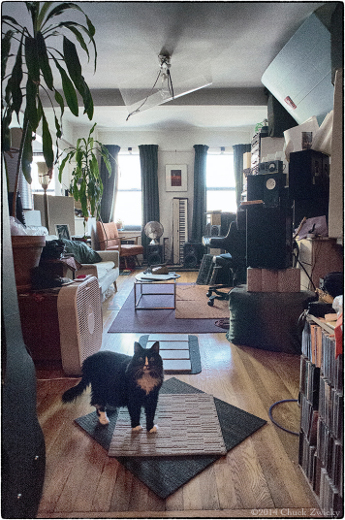

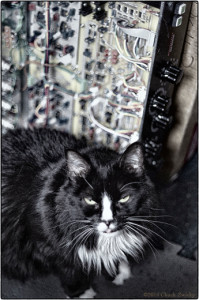

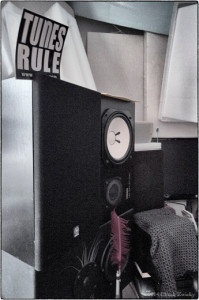
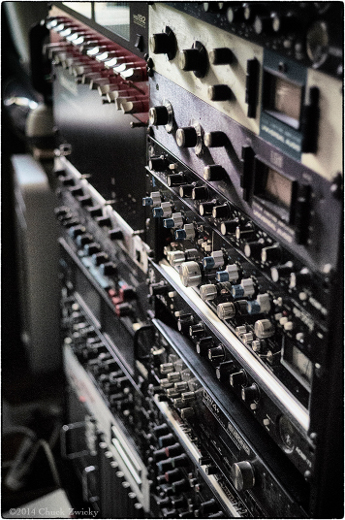
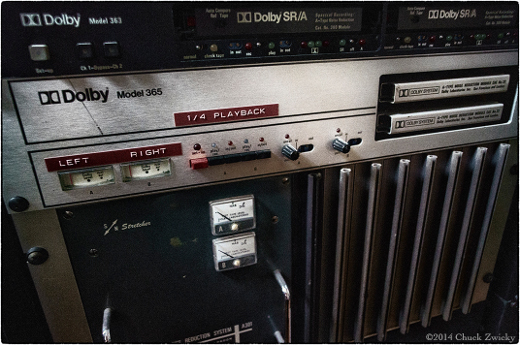

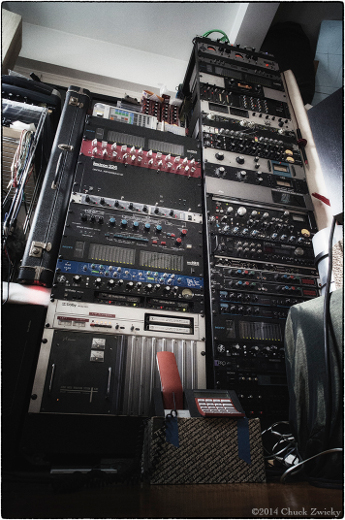
Michael D
January 10, 2015 at 2:06 pm (10 years ago)Cool piece! Very envious of the tower of power.
Heavy Empty
January 11, 2015 at 2:34 pm (10 years ago)Awesome, loved the read. Any thoughts on a plug in version of the ulsa major space station? all i could find was the princeton digital version for 500 bucks
Also meant to say Jared Tyler – So Much Love is an undiscovered gem!
Chuck Zwicky
January 16, 2015 at 9:43 am (10 years ago)Thanks to David for the lovely piece. I am happy to answer any questions anyone has…!